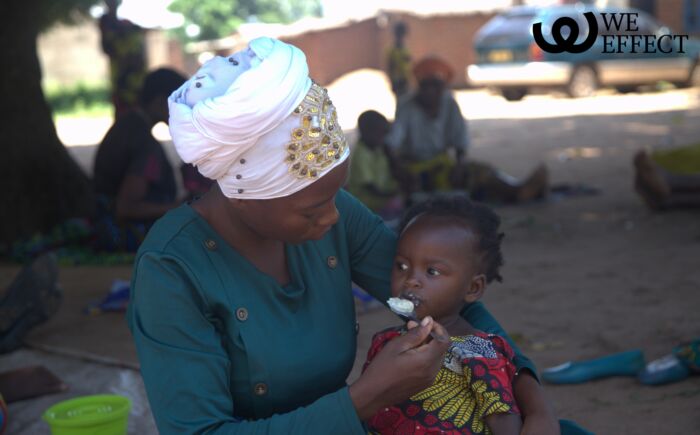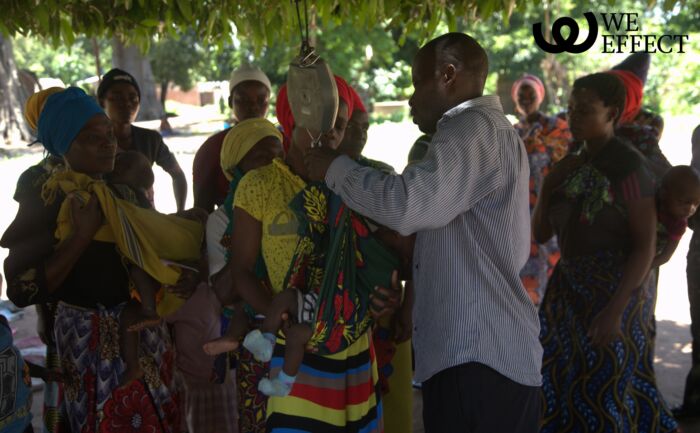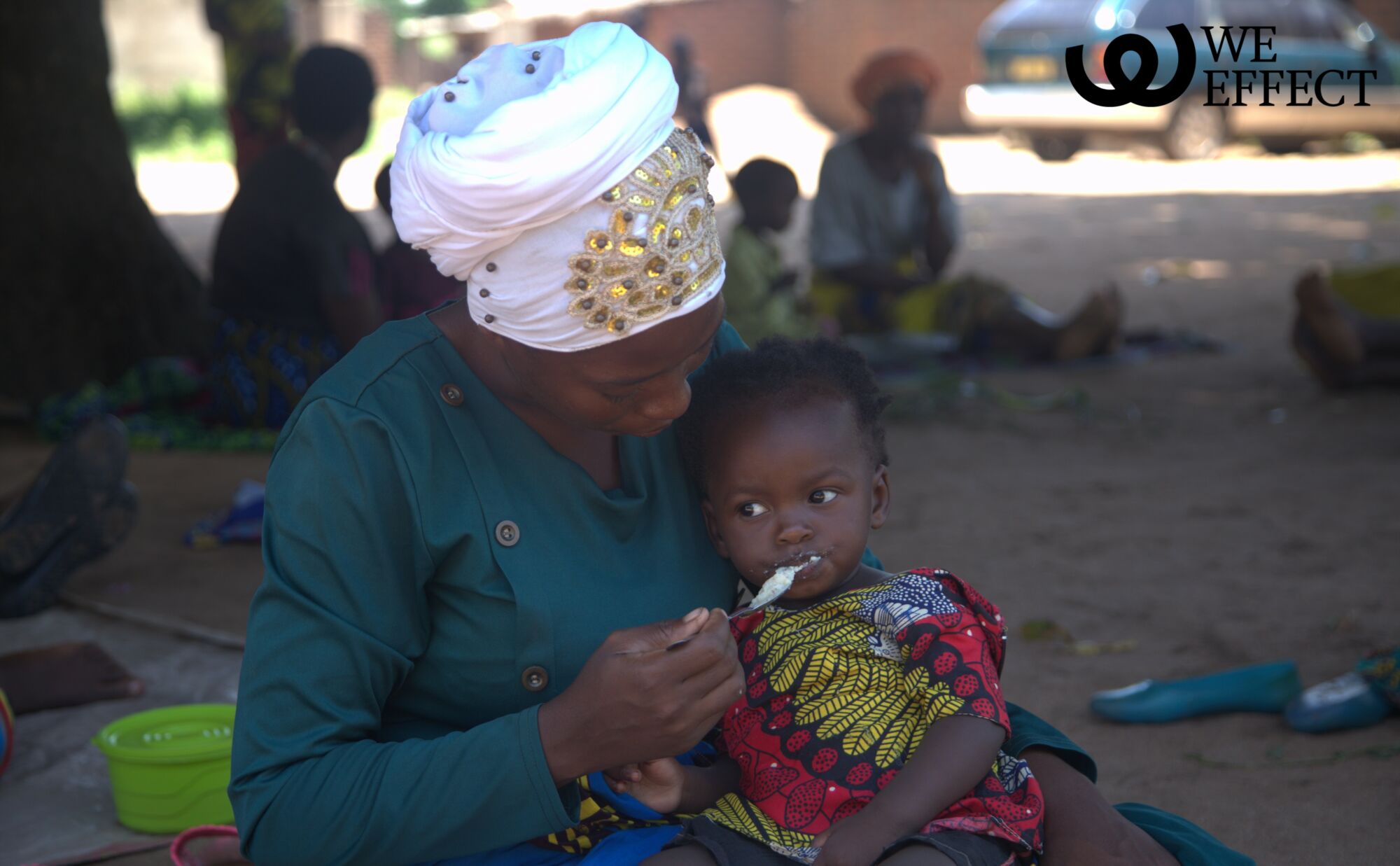Shabina Stande, a year and a month-old baby girl, whose name means “The eye of the storm,” has endured malnutrition since birth.
“She was born underweight, and her ailing health has tormented her from the beginning. She couldn’t develop like a normal child. Her weight was always below normal, and she became very thin and malnourished. As her mother, my community mocked me,” shared Patuma Awubi, 25.

Awubi, from Galanje Village in Traditional Authority Kalembo, Balaka, is a mother of two. She often withdrew from public life to avoid scrutiny. When she left Shabina at home to do part-time jobs or errands, she struggled to focus, always worrying about her crying baby.
Cyclone Freddy exacerbated Awubi’s household food insecurity, worsening Shabina’s malnutrition.
“As a mother, it was very painful to see my child in that state. I was scared I would lose her as her condition worsened. She always had a running tummy, high fever, and lack of appetite,” Awubi recalled.
We Effect and the Farmers Union of Malawi (FUM), with financial support from Radio Aid, are implementing the Thanzi project in Malawi’s southern districts of Balaka and Blantyre, targeting children like Shabina. One key intervention is the Community-Led Complementary Feeding and Learning Sessions (CCFLS).
CCFLS is a nutrition approach aimed at preventing and addressing child malnutrition. It involves 12 days of meetings, cooking demonstrations of porridge with supplements like groundnut flour, eggs, and vegetables, and feeding malnourished children.
Awubi and Shabina joined CCFLS on November 22 in 2023, and by mid-December, Shabina’s condition improved significantly. Awubi acknowledged that a poor diet contributed to her child’s malnutrition.
Awubi is now a happy mother, as Shabina, who once weighed 6kg, now weighs 9kg. Shabina is healthy and growing normally.
Promoter Laston Peter of the Nandumbo Village Development Committee (VDC) in Balaka explained that children undergo Mid-Upper Arm Circumference (MUAC) screening and weight measurements before and after the 12-day sessions to track progress and highlight the importance of proper complementary feeding.

“Children showing no improvement are referred to a health facility for further investigation, and those successfully rehabilitated are monitored for up to 12 months,” Peter said.
About 95% of children under CCFLS recover from malnutrition within the first intervention.“It is fulfilling to see children rehabilitated. Since we started, only one child needed two 12-day sessions to recover. Her condition was very acute, but she has managed to recover,” Peter added.
Esnart Suwedi, a representative of Group Village Nandumbo, noted that the Thanzi project’s interventions have improved children’s health in the area, despite compromised food security due to the cyclone. “More than half of the children in my area were malnourished. Now, if we have any malnourished children, it should be less than three,” Suwedi said.
Malawi faces one of the highest rates of malnutrition in Southern Africa, with 36% of children stunted (MICS 2019-20). The root cause lies in a poor diet, driven by poverty, food insecurity, and worsened by climate change and rising food prices. The recent prediction of above-normal temperatures, delayed onset, and dry spells due to El Nino poses a severe threat to agriculture yields, impacting an already distressed population according to a study by Save the Children.
